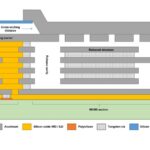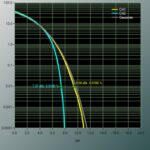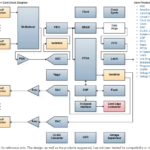Choosing an opamp for a particular task can sometimes be simple but at other times, you will have a lot of conflicting requirements which makes choosing more of a challenge. Also, the number of opamps available now is huge so it can take a while to work your way through the options from different manufacturers. While you might want a fast opamp, you might also want low noise and low input offset and low bias current as well. A manufacturer’s website might have low noise amplifiers grouped separately to the high-speed ones. The solution is usually to just pick the main parameter you are interested in to start with. In the case of Texas Instruments’ that would give 313 high speed opamps (out of 1387). You can then narrow your search to include your other critical parameters.
If you are unlucky you will end up finding no opamps which suit your requirements so you will need to either compromise the specification or use circuitry other than an opamp. For example, in the past your couldn’t get very high-speed JFET input opamps (and fast CMOS opamps didn’t exist). I used to add a dual-matched JFET source follower to a high-speed bipolar opamp to get the required performance. Today, that doesn’t tend to be necessary due to the availability of fast CMOS and SiGe devices, for example.
Bandwidth/speed
This is usually the first point to consider. If you only need a few kHz of bandwidth you can probably ignore bandwidth as your primary selection criterion and use one of your other key specification parameters to start your search. Bear in mind that if you want a gain of 100 in one stage at 10kHz you need a bandwidth of more than 1MHz. You might also want to consider slew rate, although higher bandwidth opamps generally have higher slew rates.
Voltage or current feedback
This one is important, particularly for high-speed opamps. Current feedback opamps can be very fast but can also have low input impedances and don’t like reactive components in the feedback (i.e. capacitors). So, if you find a current feedback opamp which seems to meet your basic requirements, make sure it is suitable for your application circuit.
Unity gain stable
Another important parameter depending on your application if you want to avoid your amplifier being an oscillator.
Input and output voltage range
There are a lot of rail-to-rail input and output opamps these days but you need to choose wisely. Don’t choose rail-to-rail if you don’t need it. And, if you need rail-to-rail output, don’t assume you also need rail-to-rail input. If you have a significant closed loop gain then the input voltage range will be a lot less than the output voltage range.
Input voltage range is usually the “common mode voltage range”. The two inputs of an opamp will be at almost the same voltage and the differential voltage will be tiny so it is the “common mode” voltage that is important.
Operating voltage range
This is important. If you want to power the opamp from a 3.3V single supply then make sure it works that low. Similarly, if you want to power it from +/-12V, check that it will do. There are plenty of opamps now that work at low voltages – well below 2V with the LMV951, for example, which works down to 0.9V. While that sounds impressive, it is a fairly modern opamp and the LM10 from National Semiconductor (now part of Texas Instruments) works down to 1.1V. It was designed by Bob Widlar nearly 40 years ago but is still available now.
For a low power application, you might also want to add the current consumption to the list of parameters to use to narrow your search. Again, there are some impressive devices around with opamps consuming less than 1µA, making possible circuits which “steal” a little power from somewhere.
Voltage or current input noise
Often another important parameter. Depending on your application, input current noise may contribute more to the output noise than the input voltage noise so you need to make sure you are looking at the correct figure.
Input offset
Sometimes this will be irrelevant such as in an AC coupled system. But in a DC coupled system you need to be careful that the offset is acceptable. Bear in mind that the input offset is amplified so 1mV on the input could really be 100mV on the output of the opamp and with more than one DC-coupled gain stage you can end up driving the final gain stage opamp output to the power rails just from amplified offsets.
Input bias current
This is important for circuits with high impedances, either from the signal source or in your external components. Remember that it may not be the actual bias current that affects your accuracy but the bias current offset. This would be the case if the equivalent resistance to each input was identical so the effect of the actual bias current canceled out.
Drift
Assuming you are designing to meet a temperature range, the drift of offsets and bias currents need to be checked to make sure your design still meets the requirements at all operating temperatures.
Open loop gain
I don’t usually find the open loop gain of an opamp to be a problem – most opamps have very high open loop gains although high bandwidth opamps can be lower. You might get 100dB or 120dB of open loop gain with lower bandwidth opamps but high bandwidth devices can be only 50dB to 60dB so can start to affect gain accuracy.
There are other parameters that you may need to consider if you are designing a specialized circuit such as a video amplifier. In that case, you may be concerned about the phase and gain matching of multiple devices in one package.
CMRR & PSRR
Common mode rejection ratio and power supply rejection ratio are often ignored but can still be important parameters in some applications.







Leave a Reply
You must be logged in to post a comment.